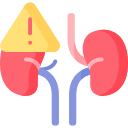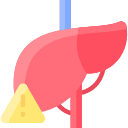ESKETAMINE
THERAPEUTICS
Class
- Nonselective, noncompetitive open-channel inhibitor of the NMDA receptor
ESKETAMINE commonly prescribed for
(Bold for FDA approved)
 How ESKETAMINE works
How ESKETAMINE works
• Esketamine is a nonselective, noncompetitive open-channel inhibitor of the NMDA receptor; specifically, it binds to the phencyclidine site of the NMDA receptor
• This leads to downstream glutamate release and consequent stimulation of other glutamate receptors, including AMPA receptors
• Theoretically, esketamine may have antidepressant effects because activation of AMPA receptors leads to activation of signal transduction cascades, including mTORC1, and an increase in growth factors such as BDNF, that cause the expression of synaptic proteins and an increase in the density of dendritic spines
How long until ESKETAMINE works
• Antidepressant effects can occur within 24 hours
SIDE EFFECTS
 Notable Side Effects
Notable Side Effects
• Dissociation, dizziness, sedation, vertigo, anxiety, lethargy, feeling drunk, numbness, hypoesthesia, blood pressure increased, euphoric mood
• Nausea, vomiting
• Lower urinary tract symptoms, including increased frequency of urination (pollakiuria)
 Life Threatening Side Effects
Life Threatening Side Effects
• Dissociation, sedation (in the USA as part of the Risk Evaluation and Mitigation Strategy [REMS] there is a required monitoring for at least 2 hours at each treatment session)
• Increased blood pressure (peak at approximately 40 minutes postadministration and lasts approximately 4 hours)
• Short-term cognitive impairment (generally resolves by 2 hours post-dose)
weight gain

unusual
sedation

common
What to do about ESKETAMINE side effects
• Use lower dose (56 mg rather than 84 mg)
• For CNS side effects, if clinically appropriate, discontinuation of nonessential centrally acting medications may help
• If blood pressure remains high, promptly seek assistance from practitioners experienced in blood pressure management
• Refer patients experiencing symptoms of a hypertensive crisis (e.g., chest pain, shortness of breath) or hypertensive encephalopathy (e.g., sudden severe headache, visual disturbances, seizures, diminished consciousness or focal neurological deficits) immediately for emergency care
DOSING AND USE
usual dosage range
----- TreatmentResistant Depression -----
• Administer in conjunction with an oral antidepressant
• Induction phase (weeks 1–4): administer twice per week; day 1 starting dose 56 mg; subsequent doses 56 mg or 84 mg
• Maintenance phase (weeks 5–8): administer once weekly; 56 mg or 84 mg
• Maintenance phase (weeks 9 and after): administer every 2 weeks or once weekly (use least frequent dosing to maintain remission/response); 56 mg or 84 mg
•----- (MDD with Acute Suicidality) (FDA approval only) -----
• Administer in conjunction with an oral antidepressant
• Weeks 1–4: administer 84 mg twice per week; dosage may be reduced to 56 mg twice per week based on tolerability
• After 4 weeks of treatment, evidence of therapeutic benefit should be evaluated to determine the need for continued treatment
 Dosage Forms
Dosage Forms
• 56 mg dose (two 28 mg nasal spray devices)
• 84 mg dose (three 28 mg nasal spray devices)
• In European Union: 28 mg dose (for patients >65 years old or adults of Japanese ancestry)
long term use
• Long-term cognitive effects of esketamine have not been evaluated beyond 1 year
• Long-term cognitive and memory impairment have been reported with repeated ketamine misuse or abuse
habit forming
• Esketamine is a Schedule III drug and in the USA is available only through a restricted program under the REMS
SPECIAL POPULATIONS
 Renal Impairment
Renal Impairment
• No dose adjustment necessary
 Hepatic Impairment
Hepatic Impairment
• Patients with moderate impairment may need to be monitored for adverse reactions for a longer period of time
• Not recommended for use in patients with severe impairment
 Cardiac Impairment
Cardiac Impairment
• Contraindicated in patients with aneurysmal vascular disease (including thoracic and abdominal aorta, intracranial and peripheral arterial vessels) or arteriovenous malformation
• Patients with cardiovascular and cerebrovascular conditions and risk factors may be at an increased risk of associated adverse effects
 Elderly
Elderly
• In clinical trials, no differences were observed in safety profile between patients aged 65 years and older and patients younger than 65 years
• In clinical trials, Cmax and AUC values were higher in patients aged 65 years and older than in patients younger than 65 years
 Children and Adolescents
Children and Adolescents
• Not approved in pediatric population
• Safety and efficacy have not been established
 Pregnancy
Pregnancy
• Controlled studies have not been conducted in pregnant women
• Not recommended for use during pregnancy; if a woman becomes pregnant while being treated with esketamine, treatment with esketamine should be discontinued and the patient should be counseled about the potential risk to the fetus
• In pregnant primates, use of NMDA receptor antagonists during the period of peak brain development increased neuronal apoptosis in the developing brain of the fetuses
• In rabbits, skeletal malformations were observed when ketamine was administered intranasally at estimated esketamine exposures of 0.3 times the maximum recommended human dose (MRHD)
• In rats, delay in sensorimotor development in pups was observed when esketamine was administered intranasally at exposures similar to the MRHD
• Because of the risk for fetal harm, consider pregnancy planning and prevention in females of reproductive potential
 Breast Feeding
Breast Feeding
• Some drug is found in mother’s breast milk
• Animal studies have shown neurotoxicity in juvenile animals when NMDA antagonists were administered during a window of vulnerability that correlates with exposures in the third trimester through the first several months of life, but this window may extend out to approximately 3 years of age in humans
• Recommended either to discontinue drug or bottle feed
Based on data Published online by Cambridge University Press
Compiled by Dr. Jash Ajmera